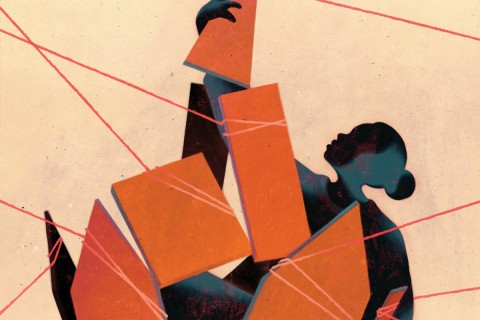Many faiths, many stories
Religion in American Life series, edited by Jon Butler and Harry S. Stout (Oxford University Press)
When I discussed the benefits and difficulties of teaching religion in public schools with my private-school religion class of 15-year-olds, I received an unexpectedly nuanced answer. The students did not simply say that religion should be taught because it is an important part of the lives of many American citizens, or that religion should not be taught because the Constitution prohibits the establishment of any publicly funded religion. Rather, they said that before they could make a decision they needed to know who would be doing the teaching. Unless they could confirm that teachers of religion would be well educated, open-minded and noncoercive, my students would not want the subject taught in public school. On the other hand, if these criteria could be met, they thought that a class about religion would be beneficial.
Oxford University Press has entered this discussion with a 17-volume series on Religion in American Life, intended primarily for readers of secondary-school age. Edited by accomplished Yale historians Jon Butler and Harry Stout, this series seeks to provide teachers and students with a trustworthy, sophisticated and encyclopedic introduction to "the evolution, character and dynamics of religion in American life from 1500 to the end of the 20th century." While no set of books can guarantee that religion will be discussed responsibly in the public schools, this series provides a scholarly and accessible foundation for such a discussion.
Butler and Stout have assembled an impressive group of historians and convinced them to distill their expertise in their respective fields into richly illustrated volumes of roughly 150 pages. All the books are plainly written, well documented and thorough. Following the First Amendment guidelines, they seek to inform students about the development of religion rather than to advocate any particular religious tradition. All the authors meet the challenge of writing for an audience of nonexperts and convincing them of the importance of the subject.
The most rewarding parts of the series come in those sections where the authors leave behind the measured tones of the academic world and seem to speak as tribal elders, communicating stories of fundamental importance to young Americans. Among these engaging sections are Edwin Gaustad and Jon Butler's appreciative discussion of how the First Amendment defused the volatile mix of religion and politics that had dominated public life in the European countries from which the early settlers came. Equally engaging are Ann Braude's description of the discrimination faced by women who have sought to become religious leaders and Grant Wacker's explanation of the profound depth of Abraham Lincoln's religious perspective.
Albert Raboteau begins his book on African-American religion by describing the panic of African villagers as a party of slavers approaches. Stephen Stein hooks readers of Alternative American Religions by asking, "How do you respond to people who are different? What is your reaction when you meet individuals who belong to religious communities whose beliefs you do not understand?" The care the authors take to make their books inviting and accessible shows how important it is to them to pass on what they know. It is this, even more than the writers' great expertise, that will win the attention of a high school audience.
Most of the books are organized chronologically, telling the stories of various religious groups and the religious institutions they created to support their communities. Important figures in these traditions receive particular attention, as do significant conflicts and compromises. Now and then, religious practice is also discussed. Primary documents are interspersed to highlight particular figures, issues or time periods. A chronology of central events, a bibliography and an index conclude each volume. When the series is completed, it will have an index covering the whole.
There are few weaknesses. An occasional topic may be passed over a bit lightly (especially in the contemporary period), but no more so than seems inevitable in an introductory series. From the point of view of a secondary school teacher or student, the lack of references to useful Web sites is a problem. Perhaps Oxford could set up a page of Web links for those who buy the series or refer students to other sites, such as the cooperatively managed one maintained by Religious Studies in Secondary Schools (www.rsiss.org). A teacher's guide suggesting productive ways to use these books in classrooms would be helpful--and is under production through the auspices of the First Amendment Center.
This is clearly an important series. Secondary school libraries will put it to good use, as will the history departments of many public and private schools. Such a compact and authoritative resource on the history of religion in America simply has not existed for secondary school students. Because this series is not "dumbed-down," it can also serve as a useful introduction for adults, as church and public libraries should note. But perhaps the most important reason to celebrate these books lies in the nature of our country--a place of rich diversity where mutual understanding between different religious traditions is important for the well-being of all.




